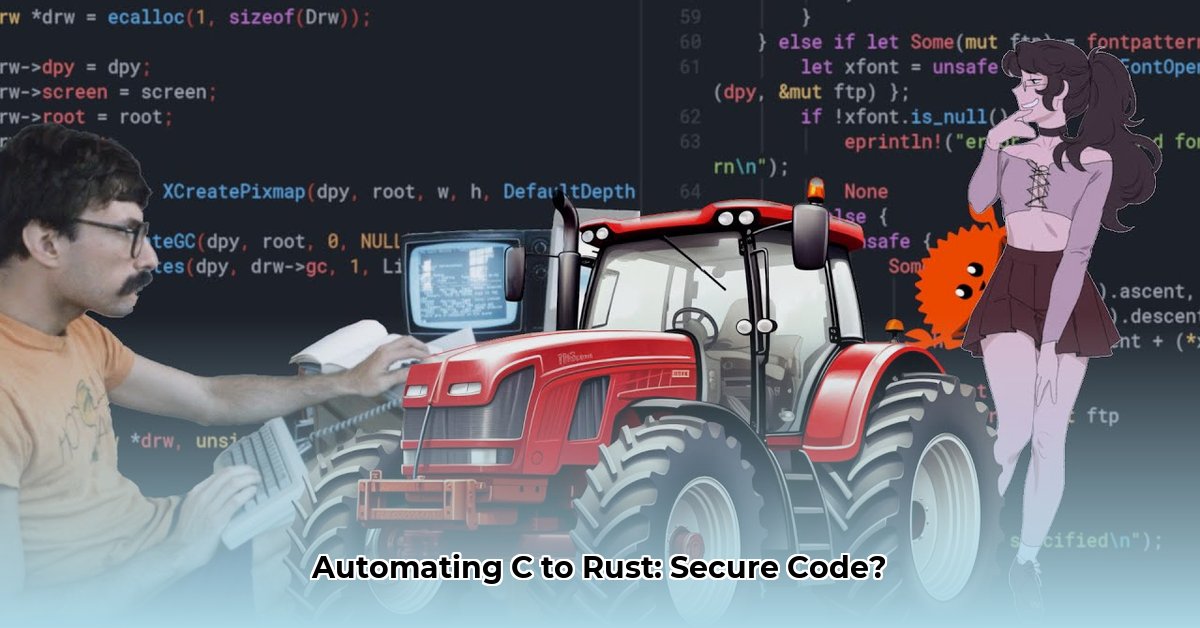
Addressing Legacy Code Vulnerabilities with Automated Translation
Legacy C code underpins much of our critical infrastructure, yet its vulnerability to memory-related security flaws poses a significant risk. DARPA's TRACTOR (Translating All C to Rust) program aims to mitigate this risk by automating the conversion of C code to the more secure Rust language. This deep dive explores TRACTOR's methodology, challenges, and potential impact on software security. The success of TRACTOR hinges on validating its output rigorously. How can we ensure the automatically generated Rust code is not only functional but also secure?
TRACTOR's Approach: Leveraging AI for Code Conversion
TRACTOR employs advanced AI techniques, specifically large language models (LLMs) and sophisticated static and dynamic code analysis tools, to translate C code to Rust. The program seeks to tackle the inherent differences in memory management between the two languages, a key source of vulnerabilities in C. This ambitious undertaking presents numerous technical hurdles.
The Challenges of Automated Code Translation
The conversion process faces several significant challenges:
Handling Undefined Behavior: C allows for undefined behavior, making it difficult to predict the precise outcome of certain code segments. TRACTOR must accurately interpret and translate these potentially ambiguous sections into safe, predictable Rust code.
Complex Pointer Arithmetic: C's flexibility, especially with pointer manipulation, often leads to memory errors. The automated translation must accurately and safely handle complex pointer arithmetic in the C code to ensure correct functionality.
Codebase Variability: The translation tool needs to adapt to the diverse coding styles and conventions found in different C projects, maintaining consistent translation accuracy.
TRACTOR's Multifaceted Risk Mitigation Strategy
TRACTOR addresses these challenges through a multi-pronged approach:
Combined Static and Dynamic Analysis: TRACTOR uses both static analysis (examining the code without execution) and dynamic analysis (analyzing the code's behavior during runtime) to identify and correct potential errors.
Custom-Trained LLMs: The program leverages LLMs specifically trained to understand programming languages and the nuances of C-to-Rust translation. These LLMs aren't general-purpose models; they're tailored for code understanding and conversion.
Comprehensive Testing: Rigorous testing, including fuzzing (inputting random data to reveal vulnerabilities), is crucial to ensure the generated Rust code functions correctly and securely.
Human-in-the-Loop Verification: While aiming for automation, TRACTOR acknowledges the limitations of AI. Human experts will review and validate the translated code to act as a crucial final check and to ensure high-quality code.
Validating TRACTOR-Generated Rust Code: A Multi-Layered Approach
The effectiveness of TRACTOR depends heavily on the validation of the generated Rust code. Simply verifying functionality is insufficient; robust security checks are paramount. A comprehensive validation strategy includes:
Static Analysis: Automated tools scan the Rust code for common vulnerabilities like buffer overflows and use-after-free errors.
Dynamic Analysis: Running the code under various conditions helps reveal runtime vulnerabilities.
Formal Verification: Formal methods mathematically prove that the code meets its specifications, offering the most rigorous form of validation, although computationally expensive.
Manual Code Review: Human experts review the code for potential errors, inconsistencies, and maintainability issues. This human review serves as a critical quality control step.
Integration Testing: Testing within the complete system verifies that the translated code integrates seamlessly with existing components.
The Potential Impact of TRACTOR
The success of TRACTOR could transform software development by significantly improving the security of legacy systems. While complete automation may remain a long-term goal, even partial success offers substantial benefits by reducing the burden of manual code refactoring and modernization. This could lead to widespread adoption of safer coding practices and improvements in software security across various sectors.
Key Takeaways:
- TRACTOR aims to automate the conversion of vulnerable C code to the more secure Rust language.
- The translation process faces significant challenges but employs a sophisticated, multi-faceted approach to mitigation.
- Rigorous validation, combining automated tools and human expertise, is essential to ensure the security and reliability of the generated Rust code.
- The program's success could revolutionize software security by facilitating the modernization of legacy codebases.